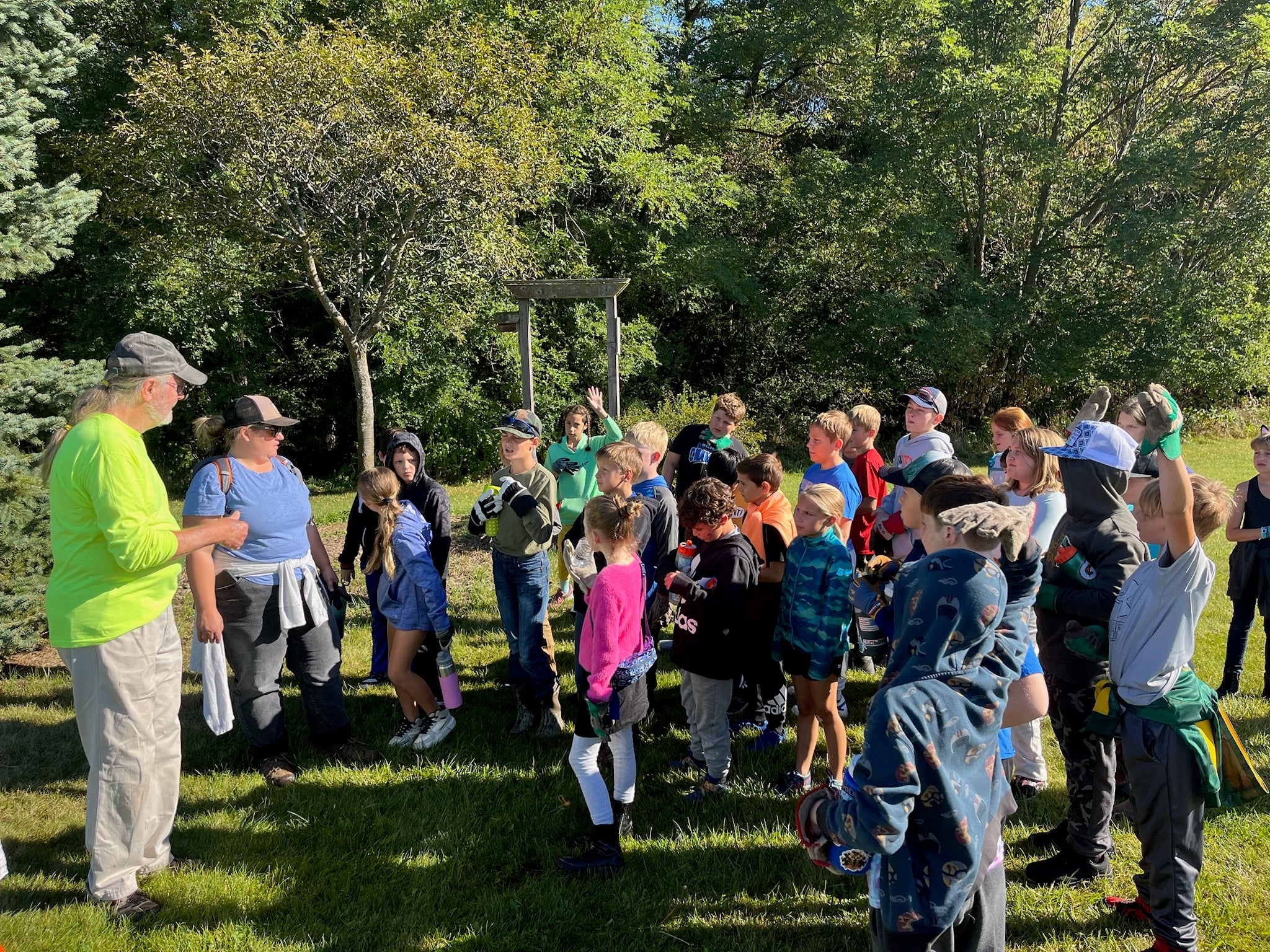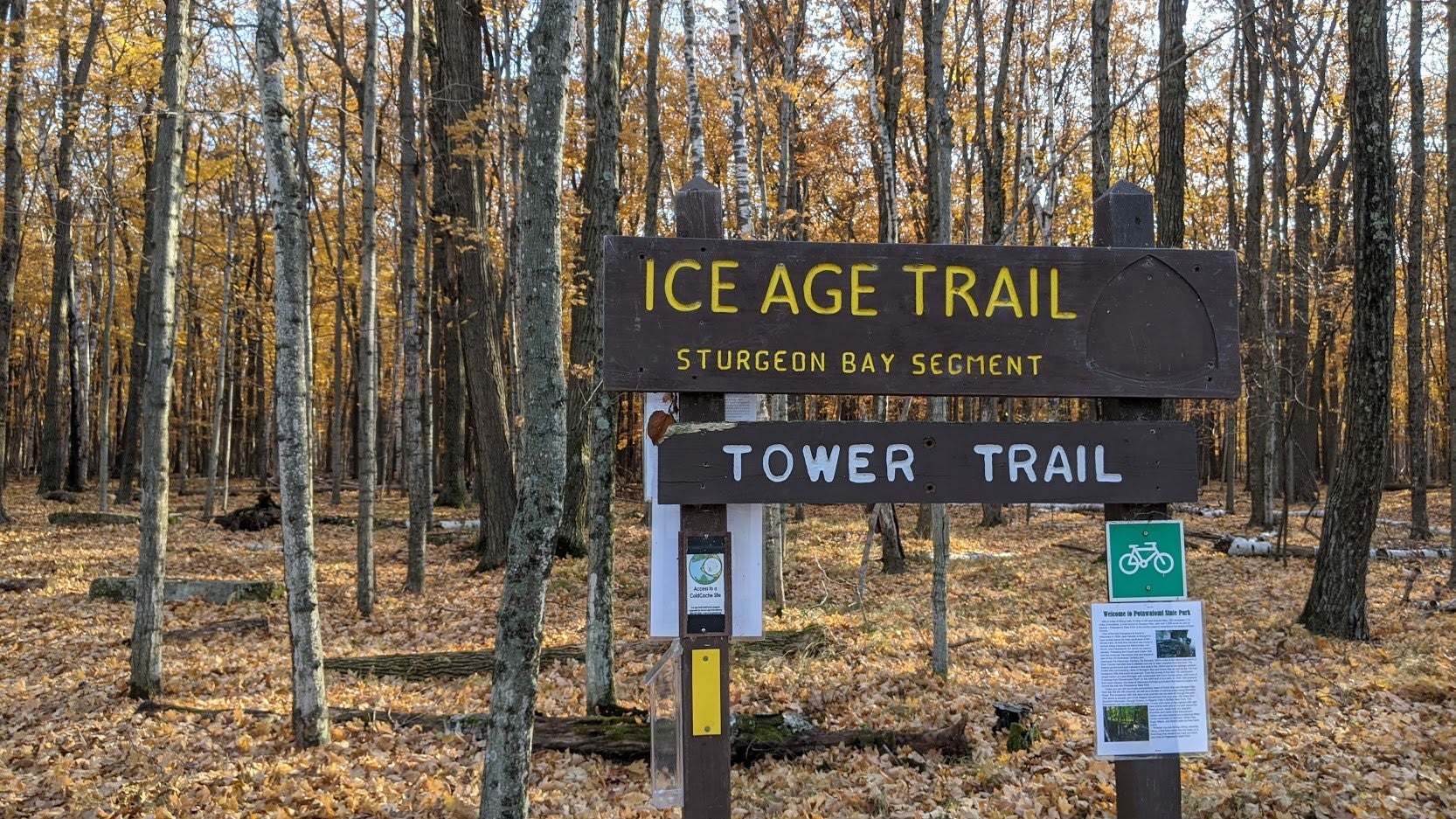The eastern terminus of Wisconsin’s Ice Age Trail is moving this spring to a more picture-perfect location.
The 1,200-mile footpath highlights geography carved out by ancient glaciers, winding through some of the state’s most picturesque locations while connecting state parks and greenways. The trail’s western terminus is on a rocky bluff high over the St. Croix River in Interstate Park.
But the eastern terminus is marked by a plaque on a boulder next to a parking lot and a pit toilet in Potawatomi State Park. The Wisconsin Department of National Resources announced Monday that the endpoint will be moved this month to an overlook less than a half-mile away.
Stay informed on the latest news
Sign up for WPR’s email newsletter.
“Hikers will enjoy a more scenic start, or finish, to their hike,” said Erin Brown-Stender, Potawatomi State Park superintendent.
The overlook has expansive views of the surrounding area. Melissa Pierick, director of community relations for the Ice Age Trail Alliance, said the move was prompted by a discussion and agreement between the DNR, the National Park Service and the Ice Age Trail Alliance. She said the new terminus location on Old Ski Hill Overlook will be more visually pleasing than its current location, which is in a heavily wooded area near a parking lot and a vault toilet. Pierick said Potawatomi State Park employees said hikers are often confused about the current terminus spot, which doesn’t seem to be a natural endpoint for the trail.
Avid hiker Kris Van Handel, of Madison, has section hiked the entire trail three times and is working on her fourth completion. She said she was happy to learn of the move.
“The spot that it is at right now can be slightly disappointing when you are finally finishing your hike because a lot of times, you have someone’s car in the background or, ‘Yeah, there’s a pit toilet in the background,’” Van Handel said. “It’s not as picturesque and scenic where it currently is. So, the new spot is definitely going to be a very nice spot and a highlight of the trail.”
Founded in 1979, the Ice Age Trail is one of 11 National Scenic Trails in the United States. Although it is administered by the National Park Service and runs through a number of state parks administered by the DNR, the trail is built and maintained by volunteers with the Ice Age Trail Alliance.
Pierick said the trail’s popularity has been growing, especially during the COVID-19 pandemic when Americans began to refocus on outdoor activities.
“The trail — in recent years — there’s been an explosion of popularity, which has been great,” she said.
That popularity translated to a sharp increase in the number of “thousand milers,” those people who hike the entirety of the trail either as thru-hikers or one section at a time. Pierick said an average of one person a year reached “thousand miler” during the first 20 years of the trail’s history. In 2021, 83 people completed the entire trail.
Van Handel said she first began hiking the trail in 2016. She quickly became hooked. Now, she and her boyfriend Jared Wildenradt, who has completed the entire trail seven times, hike on the path nearly every weekend. And she’s written a book about her experience, “Hiking with Hair Tie: Section Hiking the Ice Age Trail.” She said getting out and hiking the trail is a great way to get outdoors, and for people to see places in Wisconsin they might not otherwise visit.
“Section hiking is something anyone of any ability can do,” she said.
“I normally hike 10 to 20 miles a day, but you don’t have to do that much, you can do just a few miles,” Van Handel said. “It doesn’t matter how old you are, you just do the distance you feel comfortable doing.”
Wisconsin Public Radio, © Copyright 2025, Board of Regents of the University of Wisconsin System and Wisconsin Educational Communications Board.



